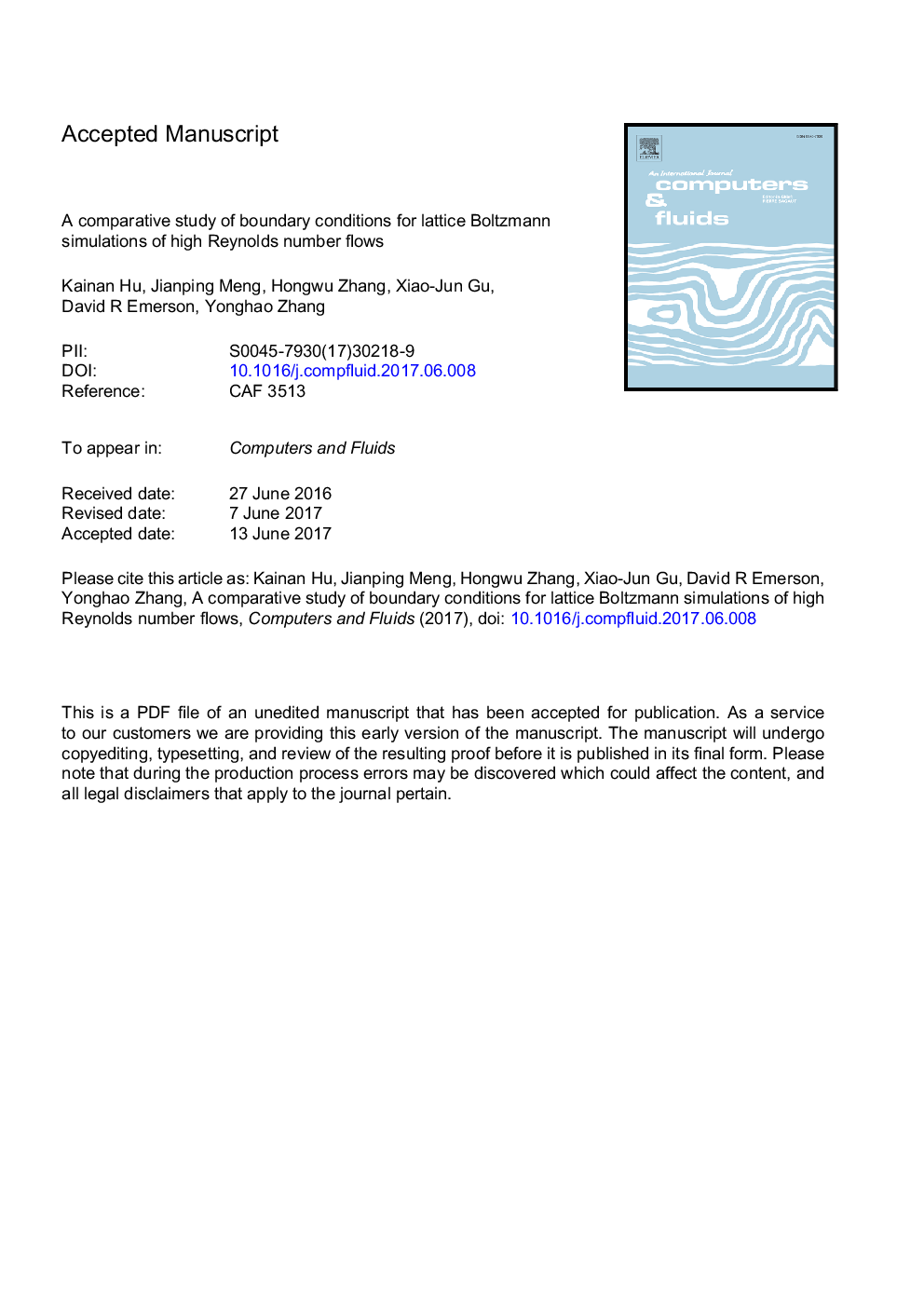| کد مقاله | کد نشریه | سال انتشار | مقاله انگلیسی | نسخه تمام متن |
|---|---|---|---|---|
| 5011736 | 1462655 | 2017 | 24 صفحه PDF | دانلود رایگان |
عنوان انگلیسی مقاله ISI
A comparative study of boundary conditions for lattice Boltzmann simulations of high Reynolds number flows
ترجمه فارسی عنوان
مطالعه مقایسه ای شرایط مرزی برای شبکۀ شبکهای بولتزمن جریانهای شماره رینولدز بالا
دانلود مقاله + سفارش ترجمه
دانلود مقاله ISI انگلیسی
رایگان برای ایرانیان
کلمات کلیدی
موضوعات مرتبط
مهندسی و علوم پایه
سایر رشته های مهندسی
مکانیک محاسباتی
چکیده انگلیسی
Four commonly-used boundary conditions in lattice Boltzmann simulation, i.e. the bounce-back, non-equilibrium bounce-back, non-equilibrium extrapolation, and the kinetic boundary condition, have been systematically investigated to assess their accuracy, stability and efficiency in simulating high Reynolds number flows. For the classical lid-driven cavity flow problem, it is found that the bounce-back scheme does not influence the simulation accuracy in the bulk region if the boundary condition is properly implemented to avoid generating non-physical slip velocity. Although the kinetic boundary condition naturally produces physical slip velocity at the wall, it gives overall satisfactory predictions of the center-line velocity profile and the vortex center locations for the Reynolds numbers considered. For the cavity flow problem, all four boundary conditions show minimal difference in the computing time needed to reach a steady state. This is surprising because the kinetic boundary condition is significantly different from the other three schemes which are designed specifically for no-slip boundary conditions. The bounce-back scheme is the most computationally efficient in updating boundary points, which is particularly attractive if there are a large number of solid bodies in the flow field. For the numerical stability, we further test the pressure-driven channel flow with or without a enclosed square cylinder. Overall, the kinetic boundary condition is the most stable of the four schemes. The non-equilibrium extrapolation scheme presents excellent stability second to the kinetic boundary condition for the lid-driven cavity flow. In comparison with other threes schemes, the stability of non-equilibrium bounce-back scheme appears to be less satisfactory for both flows.
ناشر
Database: Elsevier - ScienceDirect (ساینس دایرکت)
Journal: Computers & Fluids - Volume 156, 12 October 2017, Pages 1-8
Journal: Computers & Fluids - Volume 156, 12 October 2017, Pages 1-8
نویسندگان
Kainan Hu, Jianping Meng, Hongwu Zhang, Xiao-Jun Gu, David R Emerson, Yonghao Zhang,
